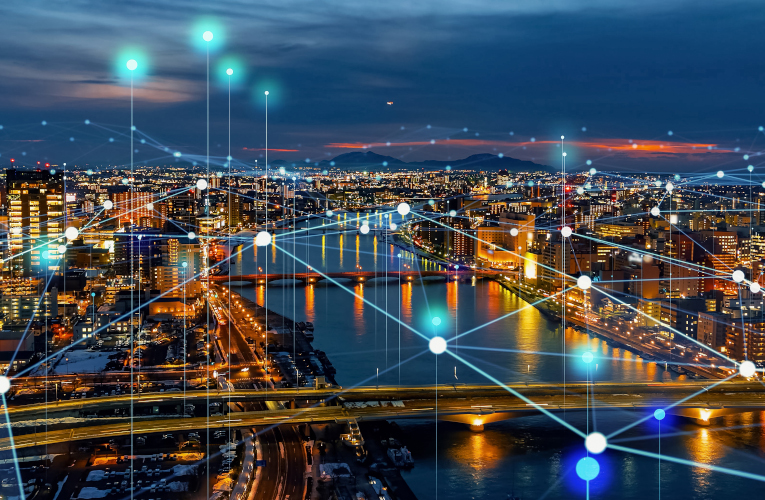
Industry Insights
Utilities Face a Workforce Readiness Gap Amid AI/ML Adoption Challenges
The global energy sector is facing unprecedented growth and transformation. According to the International Energy Agency (IEA), global electricity demand is projected to grow by an average of 3.4% annually through 2026, outpacing overall energy demand. Much of this growth is fueled by the increasing electrification of transportation, expansion of data centers and adoption of advanced technologies like artificial intelligence (AI) and machine learning (ML). Electricity consumption from data centers, AI and the cryptocurrency sector alone is expected to double by 2026, underscoring the accelerating complexity of managing modern energy systems.
To keep pace with these changes, utilities are adopting AI/ML technologies to optimize grid operations and enhance resilience. Gartner projects global AI software spending in the power and utilities sector will reach $9.8 billion in 2024 and grow to $17.8 billion by 2027. However, findings from Itron’s 2024 Resourcefulness Insight Report highlight several challenges with workforce readiness being among the most significant. While 82% of utility executives who participated in the survey say they are adopting AI/ML, many report their workforce lacks the technical skills needed to effectively implement and manage these technologies. Bridging this gap is critical to unlocking the transformative potential of AI/ML and meeting the challenges of a more electrified, technology-driven future.
Barriers to AI/ML Integration
The report, based on insights from 600 utility executives across six countries, highlights the primary challenges utilities face as they work to adopt AI/ML technologies:
- Expertise Gaps: The most significant barrier, cited by 43% of respondents, is a shortage of technical skills. AI/ML integration demands employees proficient in advanced technologies and traditional utility operations, underscoring the urgent need for workforce development.
- High Costs: Financial constraints, cited by 41% of respondents, present another hurdle. Utilities face upfront investment costs and ongoing expenses for system maintenance, integration, and upgrades.
- Data Challenges: Legacy systems, data quality issues, and scalability concerns complicate AI/ML adoption, with 40% of respondents identifying these as key barriers. Robust, secure, and standardized data infrastructure is critical to success.
- Cautious Adoption: Safety-first cultures and concerns over unproven technologies lead 39% of respondents to proceed cautiously. Reliability and regulatory compliance remain top priorities as utilities transition to smarter systems.
Aligning Adoption and Readiness
AI and ML are pivotal as utilities confront increasing complexities in grid management and the integration of distributed energy resources. Upskilling the utility workforce in these areas is critical to developing smarter, more resilient energy systems.
While the rapid adoption of AI/ML marks a step forward, aligning this progress with workforce readiness is critical to unlocking the full potential of these technologies. Utilities are already taking actionable steps:
- Upskilling the Workforce: Nearly half (48%) of respondents emphasize continuous training and education to bridge expertise gaps.
- Strategic Partnerships: Collaborations with trusted technology providers—such as Itron—are enabling utilities to implement AI/ML solutions efficiently and effectively.
- Localized Solutions: Recognizing regional challenges allows utilities to tailor strategies for their workforce and infrastructure needs.
Broader Solutions to Close the Workforce Readiness Gap
Beyond the steps highlighted in the report, additional solutions are emerging across the industry to support workforce readiness and technology adoption:
- Industry Collaboration: Utilities are partnering with trade organizations and educational institutions to address expertise gaps. Programs such as the Center for Energy Workforce Development aim to recruit and train workers for a digitally enabled future. Itron supports these efforts through its STEM education initiatives and community partnerships to equip future generations with the skills needed for careers in energy and technology. For more details on these initiatives, see Itron’s Corporate Sustainability Report.
- Supporting Local Economies: Tailored approaches matter. In the U.S., where expertise gaps are most pronounced, utilities are investing in local training programs and apprenticeships to build regional talent pools.
- AI as a Workforce Multiplier: AI/ML tools are increasingly seen as complementary to human labor. By automating routine tasks—such as grid monitoring and data processing—AI enables workers to focus on higher-value activities, like real-time decision-making and infrastructure optimization.
Shaping the Future of Utilities
Utilities are at an inflection point. As demand for electricity grows and grid transformation accelerates, workforce readiness for AI/ML integration is not just a necessity—it’s a strategic imperative. By prioritizing training, partnerships and localized solutions, utilities can align workforce capabilities with the increasing complexity of modern energy systems.
The ability to bridge the skills gap will enhance operational efficiency, drive innovation and support safer, more sustainable energy delivery. Utilities that take action today will be better positioned to meet the challenges and opportunities of tomorrow’s energy landscape.
To explore the full findings of the 2024 Resourcefulness Insight Report, visit www.itron.com/resourcefulness.
Related Articles
HTML Example
A paragraph is a self-contained unit of a discourse in writing dealing with a particular point or idea. Paragraphs are usually an expected part of formal writing, used to organize longer prose.






